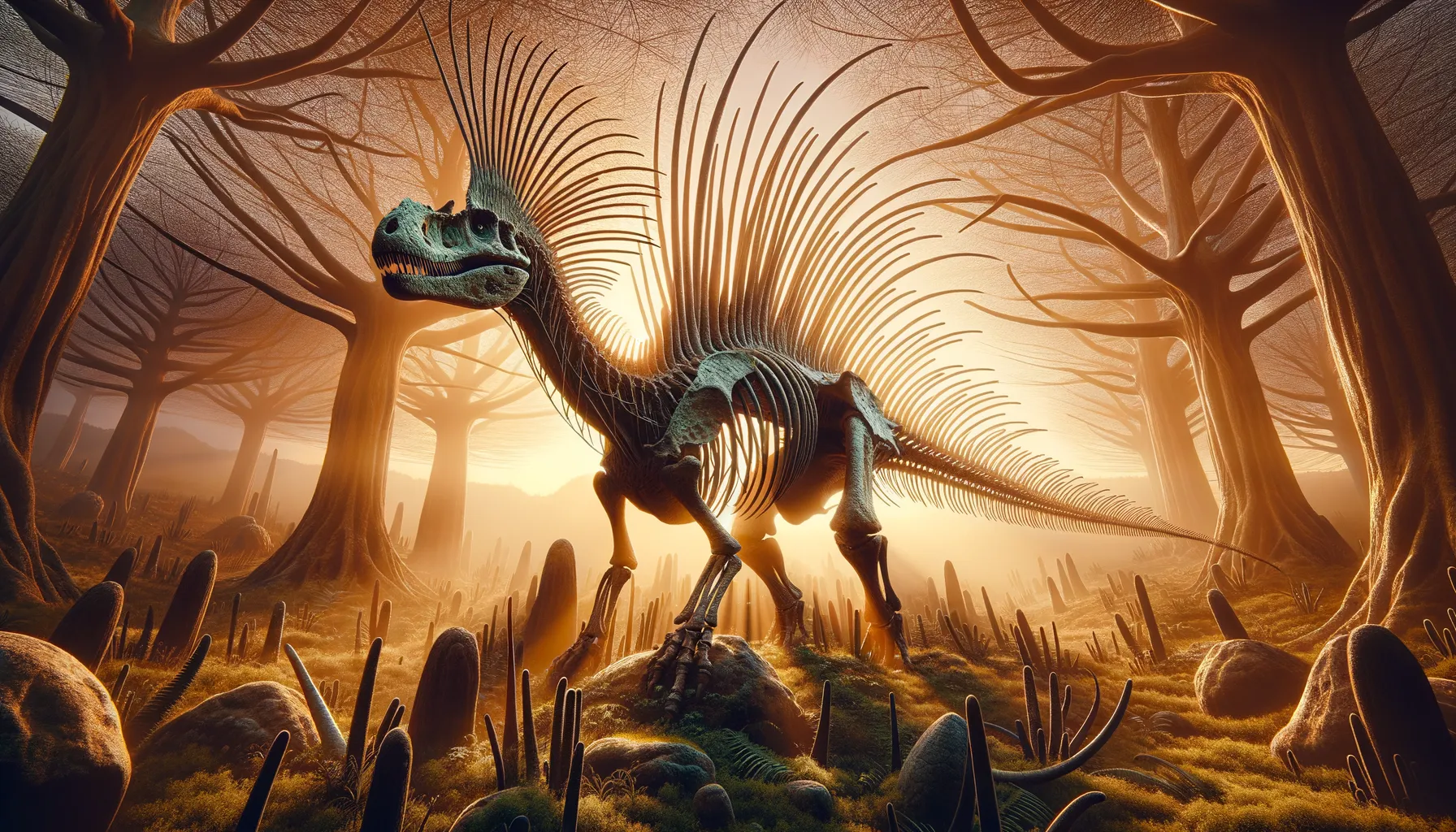
Metriacanthosaurus
A mighty hunter of the Jurassic wilds!
Period
Jurassic
Length
Up to 7.5 meters (approximately 25 feet) long.
Height
Roughly 2.5 meters (about 8 feet) tall.
Weight
Approximately 1 ton (around 1,000 kilograms).
Metriacanthosaurus was a carnivorous dinosaur known for its distinctively tall neural spines on its vertebrae. Living during the Jurassic period, this bipedal predator roamed areas that are today part of Europe. It had strong hind legs for running and sharp teeth suited for a diet of meat. Though not one of the largest theropods, it was a formidable hunter in its ecosystem.
Diet
Metriacanthosaurus was a carnivore, primarily feeding on smaller dinosaurs and carrion. Its sharp teeth and strong jaws allowed it to tear through flesh efficiently.
Hunting
This dinosaur likely preyed on smaller or similar-sized animals, using stealth and strength. It may have also scavenaged carcasses left by larger predators.
Environmental challenges
During its time, Metriacanthosaurus faced challenges such as changes in climate and competition with other predators. As vegetation patterns shifted, the availability of prey could fluctuate. Natural disasters like volcanic activity could also disrupt its habitat, affecting food sources and survivability.
Speed
Moderate, comparable to a modern big cat.
Lifespan
Estimated to live around 15-25 years.
First discovery
Discovered in England in the mid-19th century.
Fun Facts
- Metriacanthosaurus lived during the Late Jurassic period, about 160 million years ago.
- Its name means 'moderately-spined lizard,' referring to the height of the neural spines on its back.
- Metriacanthosaurus was a carnivorous dinosaur, likely preying on smaller dinosaurs and other animals.
- Fossils of Metriacanthosaurus have been found in England, making it a European dinosaur.
- Despite its imposing name, Metriacanthosaurus was of moderate size, around 6 to 8 meters long.
- It belonged to the theropod group, which also includes famous predators like Tyrannosaurus and Velociraptor.
- Metriacanthosaurus is known from only a few fossilized remains, so scientists are still piecing together its full story.
Growth and Development
Metriacanthosaurus, like many theropods, likely hatched from eggs and grew rapidly in its early years. Juvenile dinosaurs possibly formed groups for protection and learned hunting skills as they matured. As they reached adulthood, they became solitary hunters or small pack members.
Habitat
Metriacanthosaurus inhabited regions that are now part of Europe, which during the Jurassic were characterized by lush landscapes and a warm climate. Its environment included dense forests, open plains, and river valleys, providing ample opportunities for hunting and hiding. The availability of water sources was crucial for survival.
Interaction with other species
Metriacanthosaurus lived alongside various dinosaur species, both herbivorous and carnivorous. It might have competed for prey with other theropods and occasionally scavenged from larger predators' kills. Social interactions were likely aggressive, especially with rivals.
Natural lifespan
In the wild, it could live up to 25 years under favorable conditions.
Reproduction
Metriacanthosaurus was an egg-laying dinosaur, likely building nests on the ground. Like many theropods, females may have guarded the nest to protect eggs from predators. Hatchlings were precocial, meaning they were relatively mature and mobile soon after birth.
Social behaviour
While primarily solitary, Metriacanthosaurus may have exhibited occasional cooperative behavior, especially during hunting or scavenging. Territory marking and vocalizations might have been used to establish dominance or attract mates. Juveniles might have formed small groups for protection.
Fossil locations
Fossil evidence of Metriacanthosaurus has been primarily found in England. These fossils have been crucial in understanding its anatomy and its place in the ecosystem. Paleontologists continue to explore other parts of the world for additional remains to further study its distribution.
